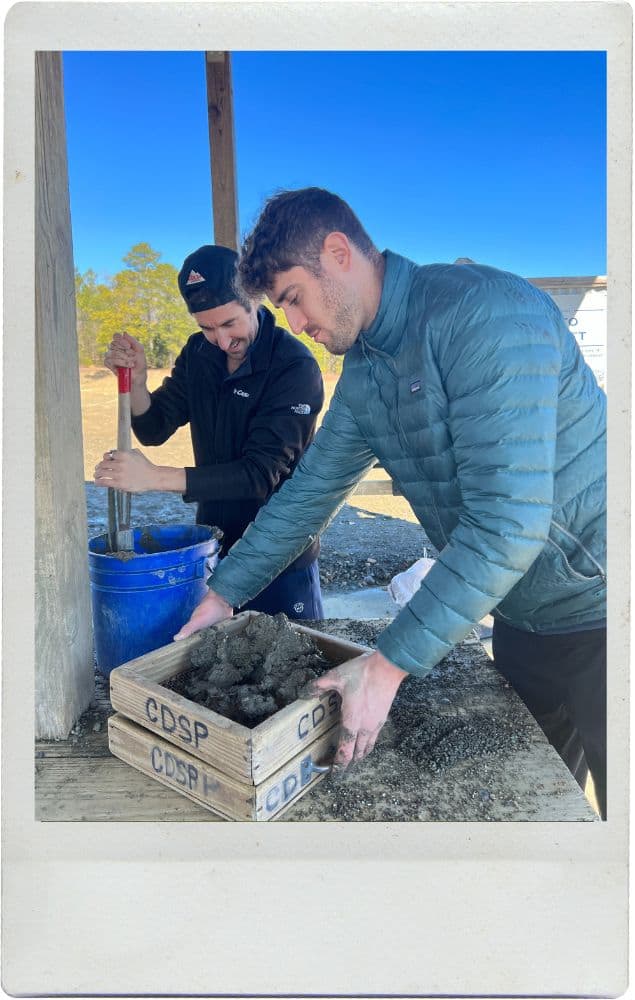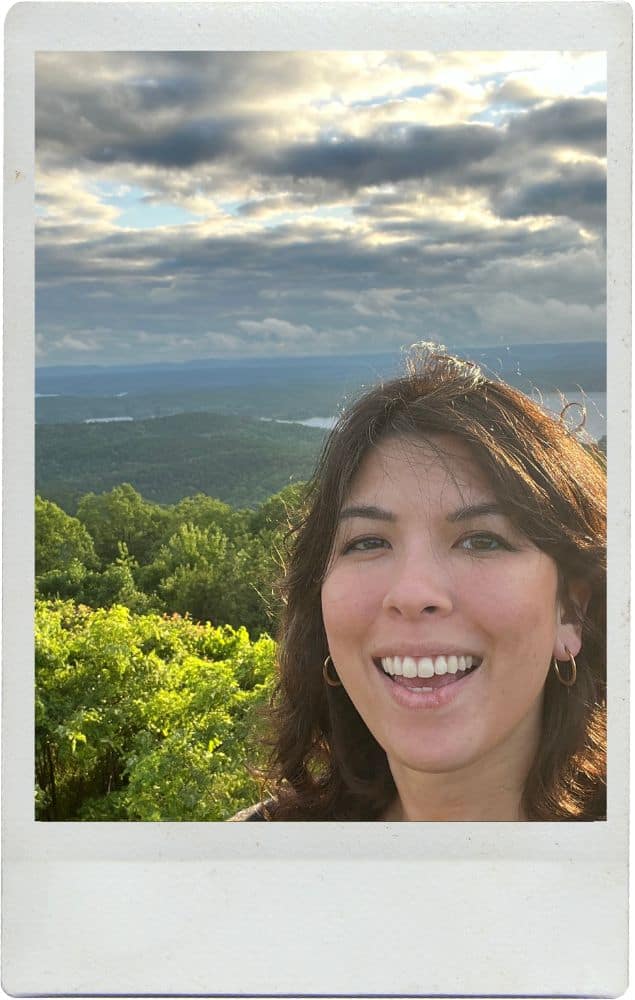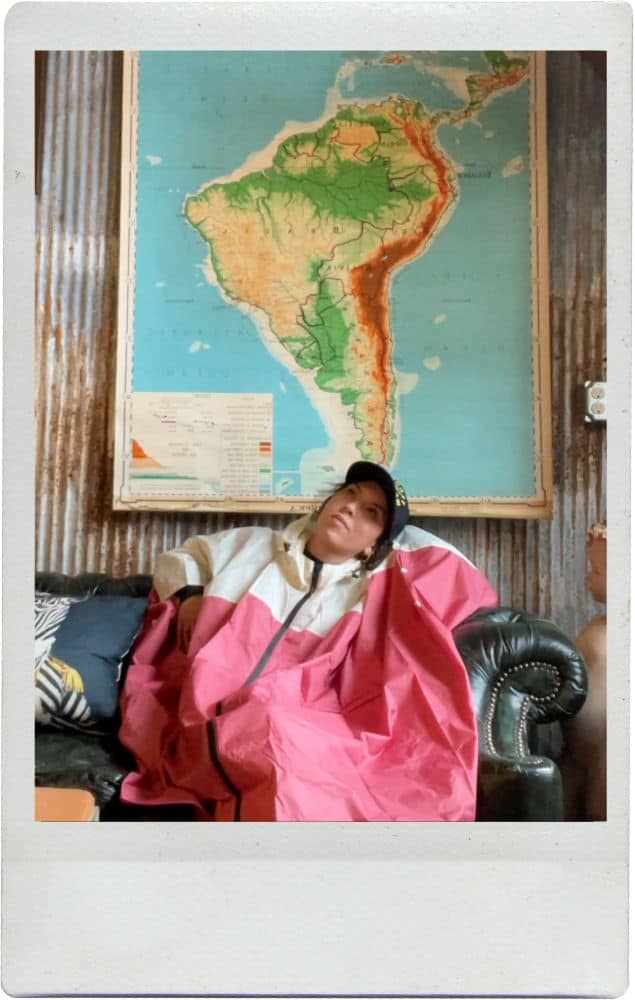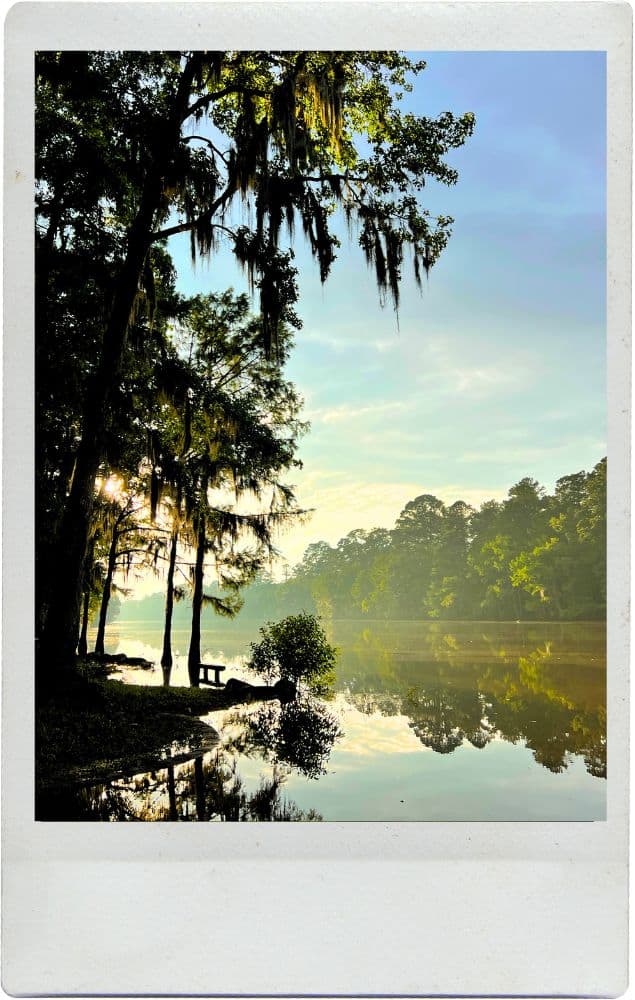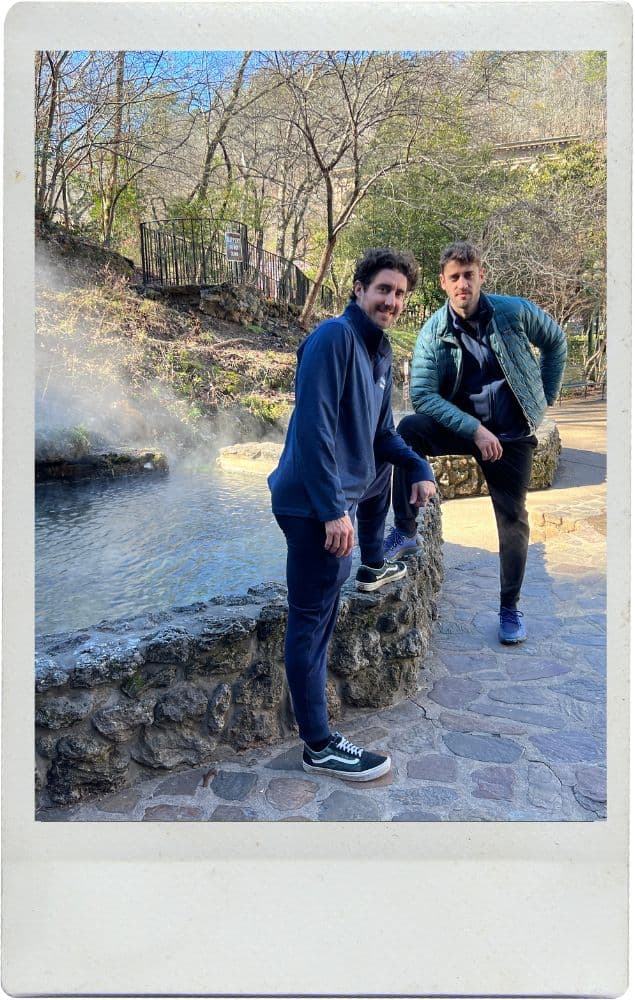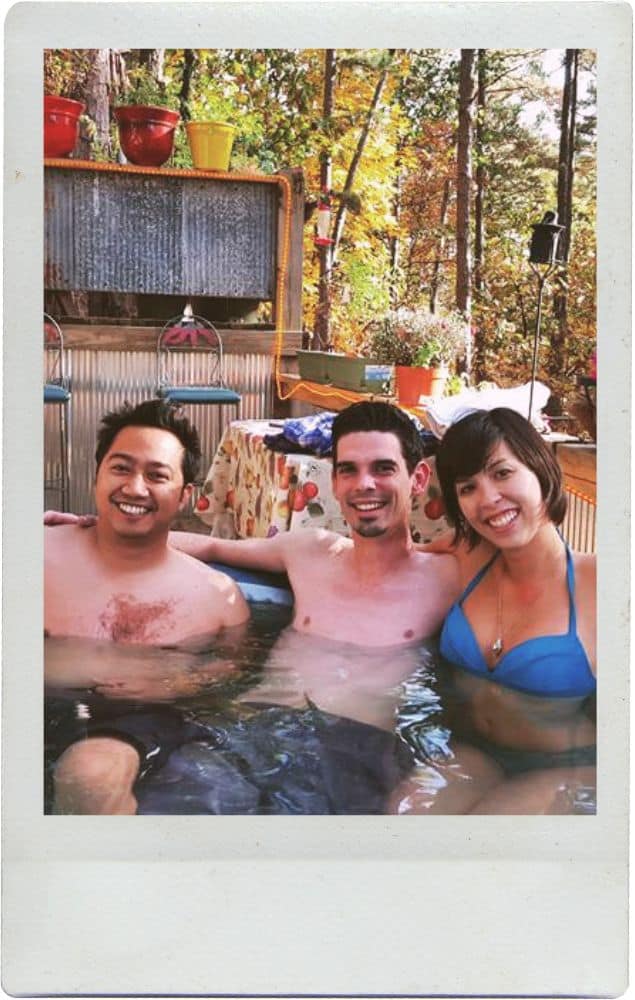Diamonds in Arkansas: Your Guide to the Hunt
There’s something enchanting about the idea of treasure hidden beneath the earth—waiting for hands that still believe in magic. The hunt for diamonds in Arkansas offers the magical allure of discovering one of nature’s treasures.
In the chilled beginnings of February 2024, my husband Adam and I scooped up his brother Joel from the Nashville airport. He had flown in from Ottawa, Canada, trading snow for Southern red clay, drawn not by comfort but by a singular and shimmering purpose: diamonds. We drove six hours southwest, cutting through Tennessee and into the Ouachita Mountains of Arkansas, bound for Hot Springs—a town I’ve passed countless times on road trips between Alabama and Texas, but never truly paused to see.
Somewhere along the way, a roadside sign caught my eye: Tennessee River Freshwater Pearl Farm. I had never heard of it before, but the words lingered with a quiet allure. Later that evening, I looked it up and learned they offer four-hour tours that explore the story of the river and the rare gems it hides—not a place where you dive for pearls yourself, but one where you witness how they form, grow, and glow in silence. One day, I hope to visit. To trace the gentle shimmer of those pearls and see how they echo the mystery of the land.
We stayed in Hot Springs for a couple of days. At the time, we didn’t know much about what to do. It was quiet, slow. We let it be. But this region—this whole central Arkansas zone—is layered with hidden histories and surprising wonder, like the diamonds in Arkansas that might lie beneath the surface. Over time, as I’ve passed through Hot Springs again and again on my way to and from Texas, I’ve started uncovering its little secrets. If you’re curious, I’ve begun collecting them in a separate post: Why You Should Visit the Ouachita: Explore Arkansas’s Hidden Gems—a gentle guide for those, like us, who didn’t know where to begin.

What I didn’t realize back then was that this area rests on one of the richest quartz vein systems in the world. I first learned about Arkansas quartz mining during a serendipitous conversation with a woman I met in Mount Shasta, California. She handed me a piece of quartz she had mined in Arkansas herself—a gift, she said, from the earth. There was something tender and luminous about that moment. It stayed with me. Since then, I’ve gone quartz mining myself and found it to be deeply satisfying and strangely meditative. Quartz may not hold the monetary value of a diamond, but it offers abundance, presence, and a kind of ancient clarity. There’s something fulfilling about pulling a clear shard of the earth’s memory straight from the soil.
(Read more about that moment and my time in Shasta here: The Ultimate Guide to Mount Shasta, California: Mysticism, Mountains & Meaning)
Before diamonds drew tourists to the fields of Murfreesboro, this land belonged to the Caddo people—an Indigenous nation with roots deep in the river valleys and rolling hills of southwest Arkansas. They were agriculturalists, artists, and spiritual stewards of the land. The Little Missouri River, which runs near the diamond field, would’ve been familiar to them—akin to the diamonds in Arkansas that now attract visitors—a sacred thread in their homeland. It feels important to remember that. To acknowledge that this ground holds not only stones, but story.
If you’re curious to learn more, I’ve written a deeper reflection here: The History of the Caddo People: Honoring the Indigenous Roots of Arkansas and the South—a tribute to the original keepers of this land and their enduring legacy.
The diamonds were calling us and reminded us of the allure that diamonds in Arkansas have for travelers.
Our true destination was Murfreesboro. Crater of Diamonds State Park is the only public diamond mine in the world where anyone can search for—and keep—what they find. That fact alone draws in believers: dreamers, wanderers, hobby geologists, and people like us, hoping for a moment of cosmic luck. We had heard that just the day before, a French tourist had found a 7.46-carat diamond sitting right on the ground—no digging, no screens—just shining there after a rain. It could be worth over $200,000. That story gave us fuel.
That morning, we rose early, spirits high. It had rained the day before, so the ground was primed—slick with promise.
What we didn’t account for was how unprepared we were.
No boots. No gloves. No buckets. Just three wide-eyed adventurers and a vast, churned-up field of red clay and sticky mud. Around us, seasoned diggers looked like they’d been planning for weeks. People had gear carts, rain-proof suits, sieves, shovels, even lunch stations. We sank into the cold mud, laughing and slipping, trying to dig with whatever we could manage.
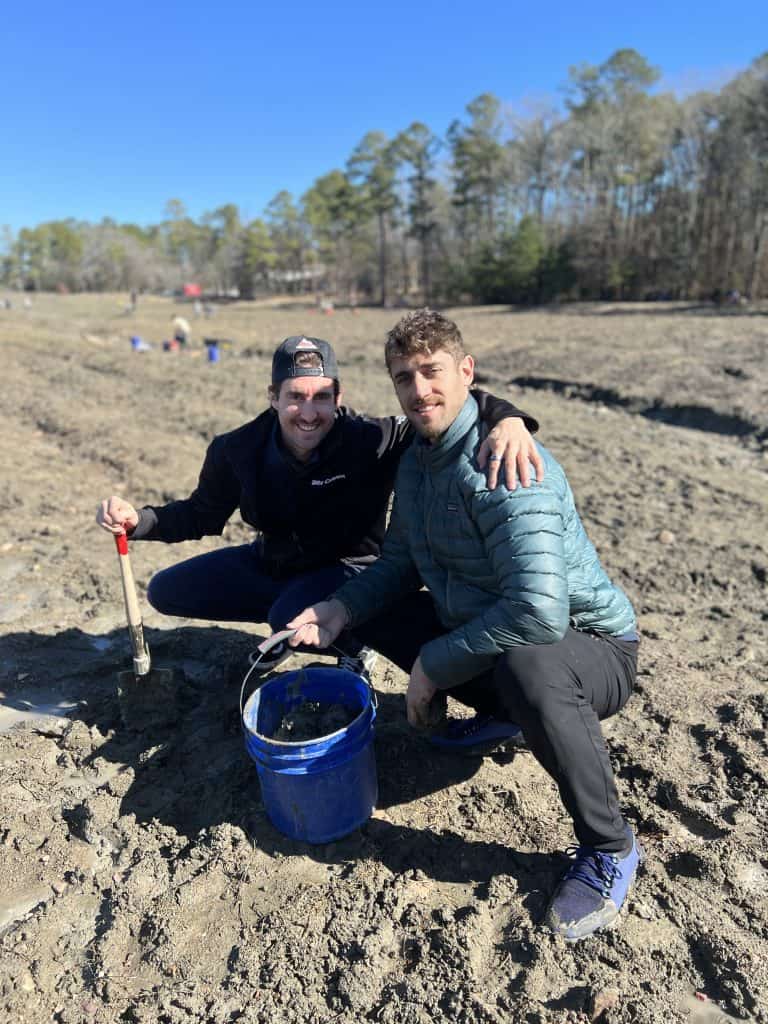
They say rain helps the diamonds rise to the surface, and there is curious speculation whether it might also reveal diamonds in Arkansas. Maybe it’s folklore, or maybe it’s science. Either way, it made us feel like anything was possible.
For a couple of hours, we gave it our best. But our knees were soaked, our fingers stiff, and we weren’t mentally prepared for what serious mining actually demands. We eventually called it—grateful for the experience, humbled by the earth, and still hopeful.
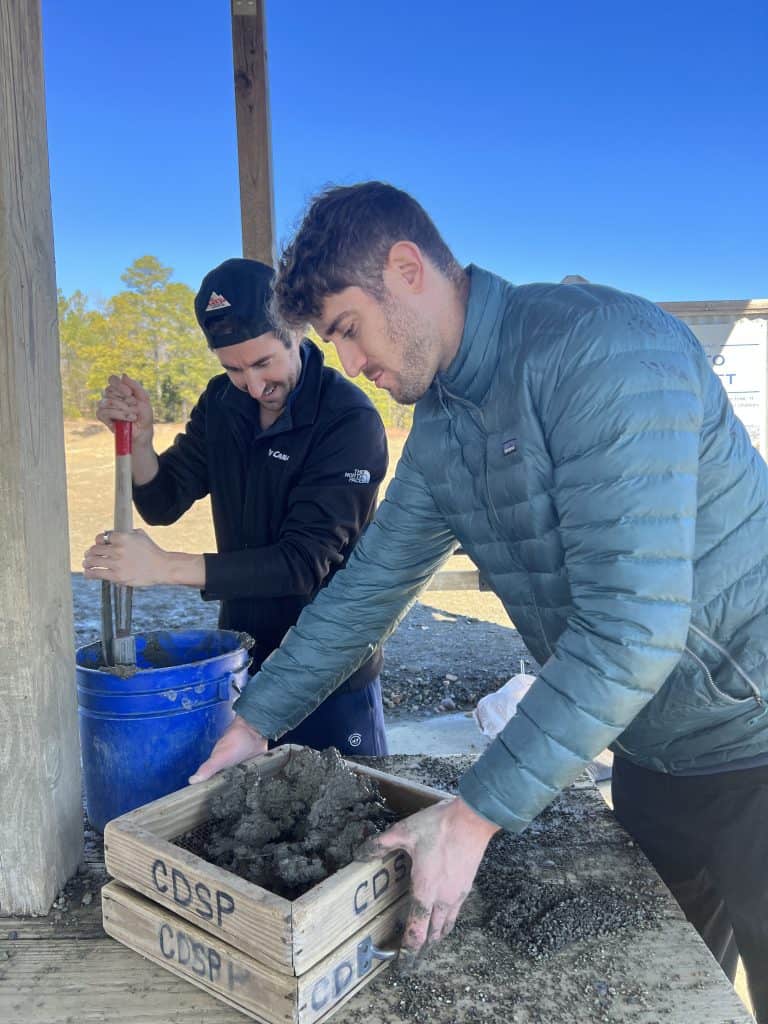
Because even though we didn’t find a diamond, I left with a quiet resolve.
I want to come back—dressed for the mud, mentally ready for the slow rhythm of the dig, and willing to stay as long as it takes. Not because I expect a fortune to appear, but because there’s something sacred in the search.
Something ancient. Something wild. Something wonderfully human.
Even when I’ve gone quartz mining, there’s a thrill in finding something hidden. Not because it’s rare, but because it’s real. A fragment of the planet, placed in your hands.
Central Arkansas has this way of holding onto its secrets, similar to the mystery of diamonds in Arkansas. It’s not flashy. It doesn’t try to impress. But for those who pay attention—for those who dig a little deeper—it reveals something extraordinary.
And that’s the kind of place I’ll always return to.


